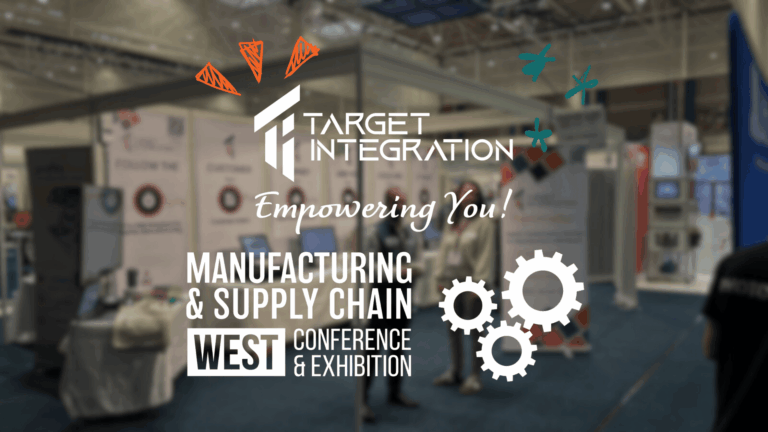How AI Agents Work in Real Applications: Tool Calling, MCP and System Architecture
Artificial intelligence has moved far beyond simple chatbots and scripted automation. Modern AI agents can complete real tasks inside real systems with accuracy, speed and consistency. They can analyse data, connect with applications, trigger workflows, and support human teams across finance, operations, manufacturing, customer service and much more.
For many organisations the question is no longer whether they should use AI agents, but how these agents actually work behind the scenes. What makes an AI agent capable of taking action? How does it connect with your internal systems? What does a safe and reliable architecture look like? And what role does the Model Context Protocol (MCP) play in the future of AI driven automation?
This blog introduces the core concepts that power modern AI agents, including tool calling, MCP integrations and the system architecture that makes everything work together. It is written for business and technical leaders who want to understand these technologies before planning their next digital transformation project.
What Is an AI Agent?
An AI agent is a software component that uses artificial intelligence models to understand a goal, analyse the information available and execute the steps needed to complete a task. Unlike a traditional bot that follows fixed rules, an agent can make decisions, use context and choose the right tools for the job.
For example, an AI agent can:
- Pull customer data from your CRM
• Analyse the information
• Generate a personalised email
• Log the communication
• Trigger a follow up task
• Notify the account manager
Rather than treating each step as a separate workflow, the agent handles the full process from end to end. This creates huge efficiency gains and removes repetitive manual work for your team.
Agents rely on three pillars: tool calling, system integrations and a secure architecture. Understanding each pillar will help you assess where agents fit into your organisation.
The Role of Tool Calling in AI Agents
Tool calling is what allows an agent to take real action. Large language models can reason about information and generate text, but they cannot perform tasks unless connected to tools.
Tools are functions or services that the agent can call whenever needed. These might include:
- Database lookups
• API calls
• File creation or modification
• Message sending
• CRM actions
• ERP workflows
• External services
• Search functions
• Calculations
• Data transformations
Here is a simple example. A user asks the agent:
“Can you find all open invoices for Customer A and send them a reminder?”
The model decides which tools to use:
- Call the “get invoices” tool
- Filter for unpaid ones
- Call the “create email” tool
- Call the “send email” tool
- Log the action through a CRM function
Tool calling transforms AI from a passive assistant into an active operational partner.
Why Tool Calling Matters
Tool calling creates several key benefits for businesses:
- It ensures accuracy because the agent uses real data
• It provides control because you decide which tools are available
• It increases speed because tasks run automatically
• It reduces human bottlenecks
• It allows AI to work across multiple systems
Without tool calling, AI agents would only be able to provide suggestions. With it, they can execute work that used to take hours.
The Importance of System Architecture
A successful AI agent strategy depends on the structure behind it. System architecture defines how the agent interacts with your environment in a safe and predictable way.
A robust architecture has four layers:
- The AI Model Layer
This is the reasoning engine. It understands instructions, analyses data and plans the next steps. It could be OpenAI, Azure OpenAI, Anthropic, or another model.
The Orchestration Layer
This layer controls how the agent chooses and handles tools. It ensures that:
- The agent selects the correct tool
• The request is formatted correctly
• Responses are validated
• The agent stays on task
• Loops and errors are controlled
This layer prevents the agent from behaving unpredictably.
- The Integration Layer
This is where tools live. Tools connect the agent to:
- CRM systems
• ERP platforms
• Databases
• Messaging systems
• File storage
• Payment systems
• Document generation tools
Each tool has clear rules about what it can and cannot do. This protects your organisation from unintended actions.
- The Security and Governance Layer
No enterprise AI project can exist without strict controls. The architecture must include:
- Secure API access
• Role based permissions
• Logged actions
• Data masking for sensitive information
• Access audits
• Rate limits
• Separation of environments for testing
The goal is simple. AI should be powerful, but never dangerous. Good architecture ensures this balance.
How MCP (Model Context Protocol) Changes Everything
The Model Context Protocol is a new open standard that allows AI models to communicate with external systems in a structured, consistent and secure way. MCP provides a framework that replaces one off integrations with a clean and unified approach.
What MCP Provides
- A simple protocol that lets models access tools safely
• A way to standardise how agents interact with apps
• One integration path that works across multiple models
• A bridge between LLMs and enterprise systems
• A predictable, auditable method for tool calling
With MCP, an AI agent no longer relies on custom, fragile integrations. Instead, it uses a defined set of resources, actions and schemas. This makes projects faster to deliver and easier to maintain.
How MCP Improves Enterprise AI
- It reduces integration time for developers
• It improves reliability
• It increases security
• It ensures consistent behaviour
• It allows organisations to build reusable tools for multiple agents
• It supports both cloud and local tools
MCP will quickly become the preferred method for building AI enabled systems.
Real World Use Cases for AI Agents
AI agents are already being used across Target Integration clients and industry projects. Their capabilities continue to expand as systems like ERP, CRM and document management evolve.
Below are several practical examples of how AI agents work in real applications.
Use Case 1: Automated Loan Processing
A lender uses an AI agent that can:
- Read uploaded documents
• Validate identity data
• Pull credit scores
• Check compliance rules
• Create a risk summary
• Produce a decision recommendation
• Trigger the approval workflow in the lending platform
This reduces processing time from hours to minutes.
Use Case 2: CRM Data Cleanup and Enrichment
Sales teams often struggle with incomplete data. An AI agent can:
- Analyse every lead and opportunity
• Cross check emails, names and company data
• Enrich missing information
• Flag duplicates
• Fix formatting
• Update the CRM automatically
This creates cleaner, more reliable data for reporting and outreach.
Use Case 3: ERP Workflow Automation
Manufacturing and distribution companies use agents to connect tasks across stock, purchasing and production. For example the agent can:
- Detect low stock
• Suggest the right purchase order
• Compare supplier prices
• Place the order
• Update the system
• Notify the warehouse
This reduces delays and human workload inside ERP environments.
Use Case 4: Customer Support Agents
AI agents can:
- Pull customer history
• Analyse support tickets
• Find relevant documentation
• Draft accurate responses
• Log actions in the help desk system
This gives support teams faster access to information and reduces manual searching.
Building an AI Agent Strategy for Your Organisation
Before implementing agents you should consider a few key factors.
- Identify Processes with Clear Inputs and Outputs
Agents thrive in structured environments where data is predictable and follow up actions are measurable.
- Ensure Your Systems Offer Reliable APIs
If systems cannot communicate, AI cannot take action.
- Start with Tasks that Have High Repetition
Examples include:
- Data entry
• Report generation
• Document checks
• Follow up reminders
• Workflow routing
• Compliance checks
These create the fastest return on investment.
- Maintain Human Oversight
AI agents do not replace people. They enhance people. Human review ensures trust and safety in early projects.
- Build a Scalable Architecture
Use consistent tools, protocols and logging rules to support future growth.
The Future of AI Agents
AI agents are moving toward deeper autonomy, stronger reasoning and closer integration with enterprise systems. The combination of tool calling, MCP and structured architecture will define how businesses adopt the next generation of automation.
In the coming years we expect to see:
- More agents working together across connected systems
• Greater use of real time data
• Wider adoption of MCP as a standard
• Advanced decision making, not just automation
• Industry specific agents for finance, supply chain, government and healthcare
Businesses that invest early will gain a clear advantage in productivity, accuracy and cost savings.
Conclusion
AI agents offer a practical and powerful way to automate real business tasks. With the combination of tool calling, MCP and a secure system architecture, organisations can confidently deploy automation that is reliable, safe and aligned with their goals.
If your organisation is exploring how to adopt AI agents, Target Integration can help you plan, integrate and deliver a complete strategy across CRM, ERP, document management and customer engagement.
Agents are no longer experimental. They are becoming essential. The organisations that learn how to use them now will move ahead of competitors and operate with far greater efficiency.




